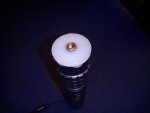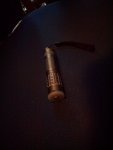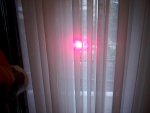- Joined
- Feb 21, 2016
- Messages
- 475
- Points
- 0
hi all,im new to the forum and also new to lasers.so i made my 1st cheap 650nm laser,i extracted the diode from a NEC 16x ND-3550A and used an adjustable 0-500ma driver,i used a very cheap lense from those 5mw flat diodes that selling on ebay(i know ill change this soon) and mount all of them on flashligh housing.i played with the potentiometer and set it around 200-250ma,the problem i got is when i try more current nothing happens the output power of the diode is not changing,i measured the driver with my multimeter and it does raises the current.i expected the diode to get brigher or die after that.the diode is always cool and i also do quick cycles on and off but when i set the current at 350ma it felt worm-hot.at current state the beam is visible at night on the sky and it can burn black things and light matches.so the question is why it doesnt accept more power?thanks for the help and sorry for my english 








